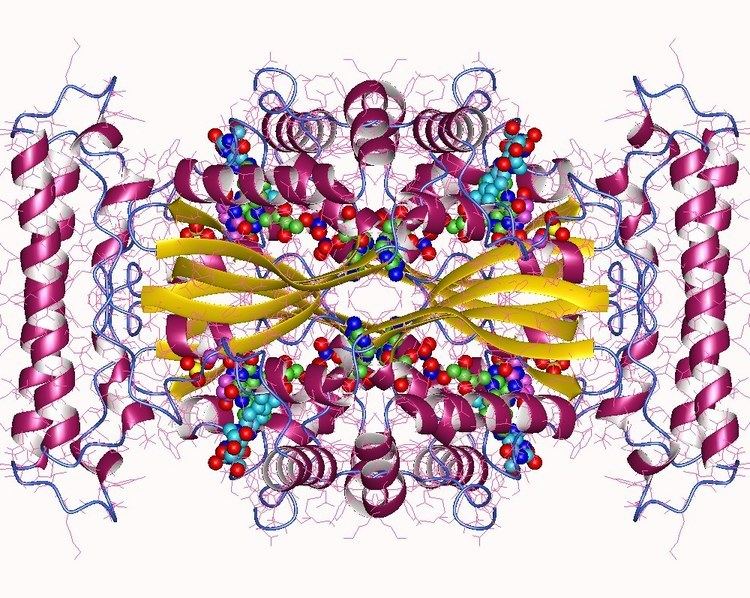EC number 2.1.1.148 | ExPASy NiceZyme view MetaCyc | |
 | ||
In enzymology, a thymidylate synthase (FAD) (EC 2.1.1.148) is an enzyme that catalyzes the chemical reaction
The 3 substrates of this enzyme are 5,10-methylenetetrahydrofolate, dUMP, and FADH2, whereas its 3 products are dTMP, tetrahydrofolate, and FAD.
This enzyme belongs to the family of transferases, to be specific those transferring one-carbon group methyltransferases. The systematic name of this enzyme class is 5,10-methylenetetrahydrofolate,FADH2:dUMP C-methyltransferase. Other names in common use include Thy1, and ThyX. This enzyme participates in pyrimidine metabolism and one carbon pool by folate.
Most organisms, including humans, use the thyA- or TYMS-encoded classic thymidylate synthase whereas some bacteria use the similar flavin-dependent thymidylate synthase (FDTS) instead.
Structural studies
As of late 2007, 3 structures have been solved for this class of enzymes, with PDB accession codes 2AF6, 2CFA, and 2GQ2.
